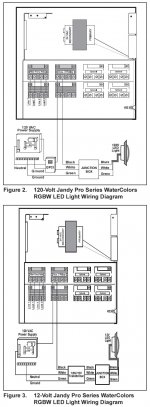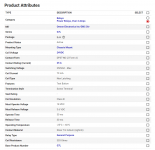I think that that would work, but check with a local electrician to make sure it meets local code.
The amperage increases by a factor of 10 as the voltage decreases by a factor of 10.
So, a 300 watt output at 12 volts is 25 amps.
You would have to wire 120 volts to the transformer primary input side and then 3 wires from the secondary side of the transformer back into the box to the relays and then 3 wires back to the transformer and out to the lights.
I think that the 120 volt wires need to be separated from the 12 volt wires.
So, one conduit from the Jandy box to the transformer with 3 wires (Black, White and Green) and one conduit from the Jandy box to the transformer with 6 wires for the lights.
The amperage increases by a factor of 10 as the voltage decreases by a factor of 10.
So, a 300 watt output at 12 volts is 25 amps.
You would have to wire 120 volts to the transformer primary input side and then 3 wires from the secondary side of the transformer back into the box to the relays and then 3 wires back to the transformer and out to the lights.
I think that the 120 volt wires need to be separated from the 12 volt wires.
So, one conduit from the Jandy box to the transformer with 3 wires (Black, White and Green) and one conduit from the Jandy box to the transformer with 6 wires for the lights.



